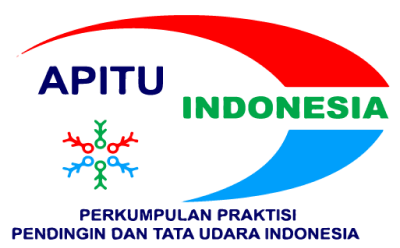ANALISIS TEGANGAN PROPELLER KAPAL PENANGKAP IKAN DI KOTA DUMAI MENGGUNAKAN FINITE ELEMENT ANALYSIS
Abstract
Propeller merupakan salah satu komponen pada kapal penangkap ikan yang memiliki fungsi untuk menggerakan kapal. Efisiensi dari propeller kapal sangat berpengaruh langsung terhadap mesin utama penggerak pada kapal penangkap ikan. Beberapa kondisi, propeller kapal dirancang untuk menyerap daya seminimal mungkin dan memberikan efisiensi gerak kapal semaksimal mungkin. Gaya rotasi propeller kapal akan menciptakan gaya dorong kapal. Gaya yang bekerja pada propeller kapal terjadi karena adanya gaya dari dorongan dan gaya centrifugal serta torsi dari propeller kapal pada setiap blade yang disebabkan revolusi di sekitar sumbu putar propeller kapal. Oleh karena itu, perhitungan tegangan yang dihasilkan dari gaya-gaya pada propeller kapal sangat sulit di perhitungkan secara akurat. Finite Element Analysis (FEA) telah menjadi solusi untuk memprediksi dari suatu kekuatan material yang tidak dapat ditunjukkan dalam teoritis dan memungkinkan desainer untuk melihat semua gaya secara teoritis yang terjadi pada model. Penelitian ini menggunakan material paduan tembaga yang memiliki number of element sebesar 406674 dan jumlah nodes 640321. Hasil yang didapatkan yaitu tegangan maksimu Von Mises yaitu sebesar . Sedangkan nilai regangan maksimum yaitu sebesar 0,2448 dan nilai displacement maksimum sebesar 133 mm. Nilai safety factor pada penelitian ini sangat rendah yaitu 0. Sehingga geometri desain model propeller sangat rawan terjadi kegagalan atau deformasi saat diaplikasikan.
Full Text:
PDFReferences
Babu, K. P. S., & Padmanabhan, S. (2017). Design of marine propeller blade with different blade sequences analyse the hydro formation under pressure hydrodynamic fill. ARPN Journal of Engineering and Applied Sciences, 12(17), 4996–5002.
Carlton, J. (2007). Marine Propellers and Prolusion (Third Edit).
Dapas, S. O. (2011). Analisis Struktur Rangka Batang. Jurnal Ilmiah Media Engineering, 1(2), 156–160.
Fadiji, T., Coetzee, C. J., Berry, T. M., Ambaw, A., & Opara, U. L. (2018). The efficacy of finite element analysis (FEA) as a design tool for food packaging: A review. Biosystems Engineering, 174, 20–40.
Ishak, M. A., Sulaiman, S., Baharudin, B. T. H. T., & Syajaratunnur, Y. (2017). Research on the ship propeller blade to determine changes in the mechanical properties based on the forces projection. ARPN Journal of Engineering and Applied Sciences, 12(4), 1241–1247.
Khashan, M. K., Khaleel, H. H., & Meteab, A. H. (2017). Numerical Study and Analysis of Ship Propeller. 40(4), 572–578.
Kishore S., J., Rao, B. S., & Babu, P. K. (2015). FEM Analysis on Submarine Propeller Blade for Improved Efficiency by using Solid Works and ANSYS-Workbench. International Journal of Emerging Engineering Research and Technology Volume 3, Issue 11, November 2015, PP 144-151.
Lasabuda, R. (2013). Pembangunan Wilayah Pesisir Dan Lautan Dalam Perspektif Negara Kepulauan Republik Indonesia. Jurnal Ilmiah Platax, I(2), 92–101.
Lin, H. J., Lai, W. M., & Kuo, Y. M. (2010). Effects of stacking sequence on nonlinear hydroelastic behavior of composite propeller blade. Journal of Mechanics, 26(3), 293–298.
Oladokun, S. O. (2016). Study of Efficiency and Environmental Performance of Propeller. Journal of Coastal Zone Management, 18(2).
Pranoto, S. H., & Mahardika, M. (2018). Design and finite element analysis of micro punch CNC machine modeling for medical devices. AIP Conference Proceedings, 1941.
Pratama, J., & Mahardika, M. (2018). Finite element analysis to determine the stress distribution, displacement and safety factor on a microplate for the fractured jaw case. AIP Conference Proceedings, 1941, 1–7.
Rahmi, M., Canra, D., & Suliono, S. (2018). Analisis Kekuatan Ball Valve Akibat Tekanan Fluida Menggunakan Finite Element Analysis. JTT (Jurnal Teknologi Terapan), 4(2), 79–84.
Ramadhan, M. S., Mangalla, L. K., & Samhuddin. (2018). Perancangan Dan Simulasi Frame Mobil Gokart. ENTHALPY-Jurnal Ilmiah Mahasiswa Teknik Mesin PERANCANGAN, 3(2), 1–10.
Rao, Y. S., Rao, K. M., & Reddy, B. S. (2012). Stress Analysis of Composite Propeller By Using Finite Element Analysis. International Journal of Engineering Science and Technology, 4(8), 3866–3875.
Reddy, T. C. K., & Rao, K. N. (2015). Design and Simulation of A Marine Propeller. International Journal of Research in Advanced Engineering Technologies, 5(1), 111–128.
Rodriguez, N. M., & Lade, P. V. (2013). Effects of Principal Stress Directions and Mean Normal Stress on Failure Criterion for Cross-Anisotropic Sand. Journal of Engineering Mechanics, 139(11), 1592–1601.
Saputro, A. H., Hidayat, T., & Qomaruddin. (2017). Analisa Poros Alat Uji Keausan Untuk Sistem Kontak Two-Disc Dengan Menggunakan Metode Elemen Hingga. Simetris: Jurnal Teknik Mesin, Elektro Dan Ilmu Komputer, 8(1), 283–290.
Setyono, B., Mrihrenaningtyas, & Hamid, A. (2016). Perancangan Dan Analisis Kekuatan Frame Sepeda Hibrid “Trisona” Menggunakan Software Autodesk Inventor. Jurnal IPTEK, 20(2), 37.
Suneetha, M., Rao, R. S., Vardhan, V. V., & Gowd, G. H. (2013). Design & Analysis of a surface propeller using FEM. International Journal of Emerging Technology and Advanced Engineering, 3(9), 198–204.
Syafrizal. (2017). Analisis tegangan batang lentur tumpuan jepit dan roll pada material stainless stell. ELEKTRA, 2(2), 93–100.
Tan, Y., Li, J., Li, Y., & Liu, C. (2019). Improved Performance Prediction of Marine Propeller: Numerical Investigation and Experimental Verification. Mathematical Problems in Engineering, 2019.
Wandono, F. A. (2017). Permodelan Metode Elemen Hingga UNTUK Menentukan Tegangan Von Mises Pada As Roda Lsu-05. Seminar Nasional Iptek Penerbangan Dan Antariksa XXI, 222–231.
Zainol, I., & Yaakob, O. (2016). Use of diesel engine and surface-piercing propeller to achieve fuel savings for inshore fishing boats. Journal of Marine Science and Application, 15(2), 214–221.
DOI: https://doi.org/10.31884/jtt.v5i2.225
Refbacks
- There are currently no refbacks.
Copyright (c) 2019 JTT (Jurnal Teknologi Terapan)

This work is licensed under a Creative Commons Attribution-NonCommercial-NoDerivatives 4.0 International License.
 Creative Common Attribution-ShareAlike 4.0 International (CC BY-SA 4.0)
Creative Common Attribution-ShareAlike 4.0 International (CC BY-SA 4.0)














